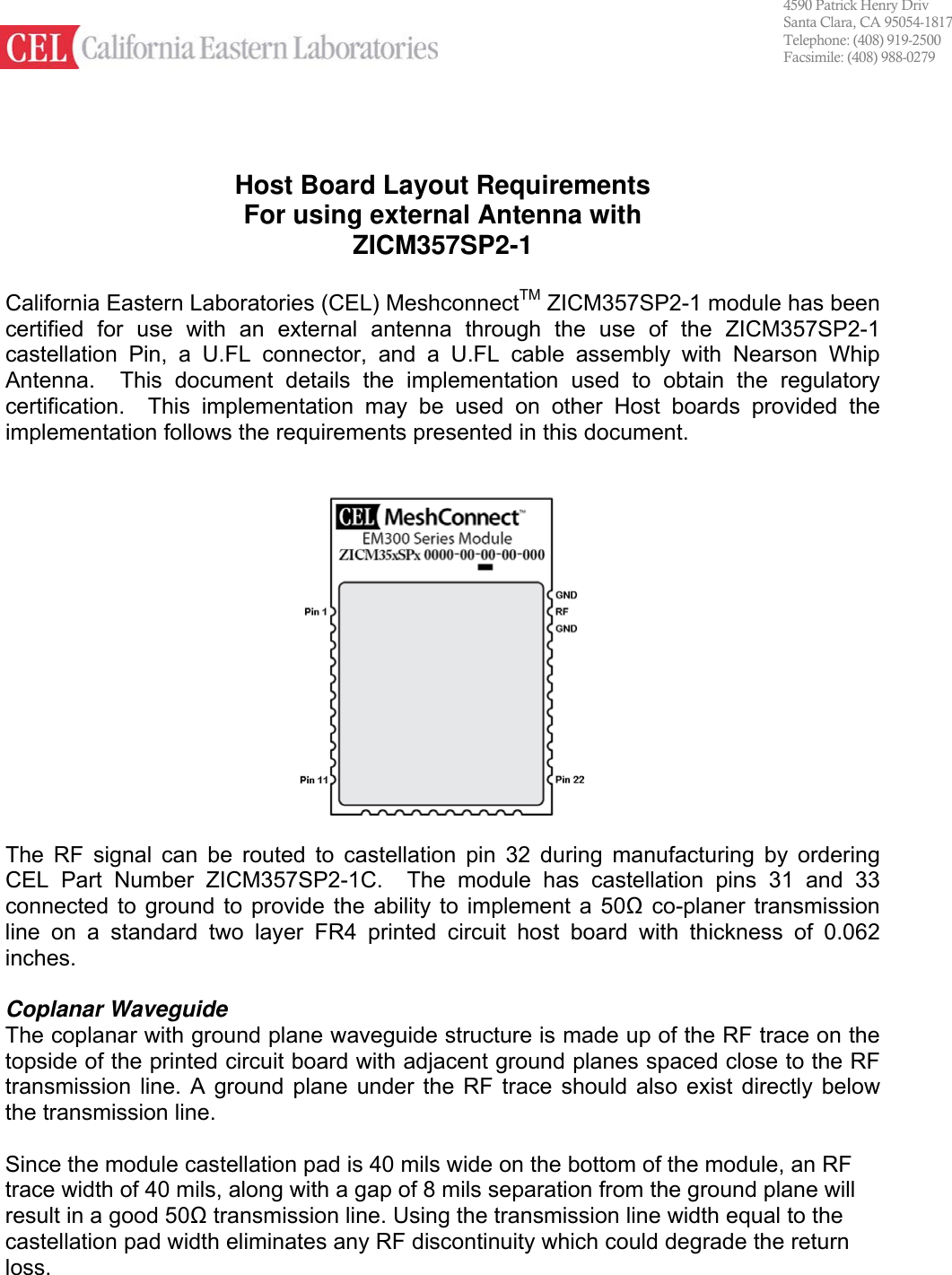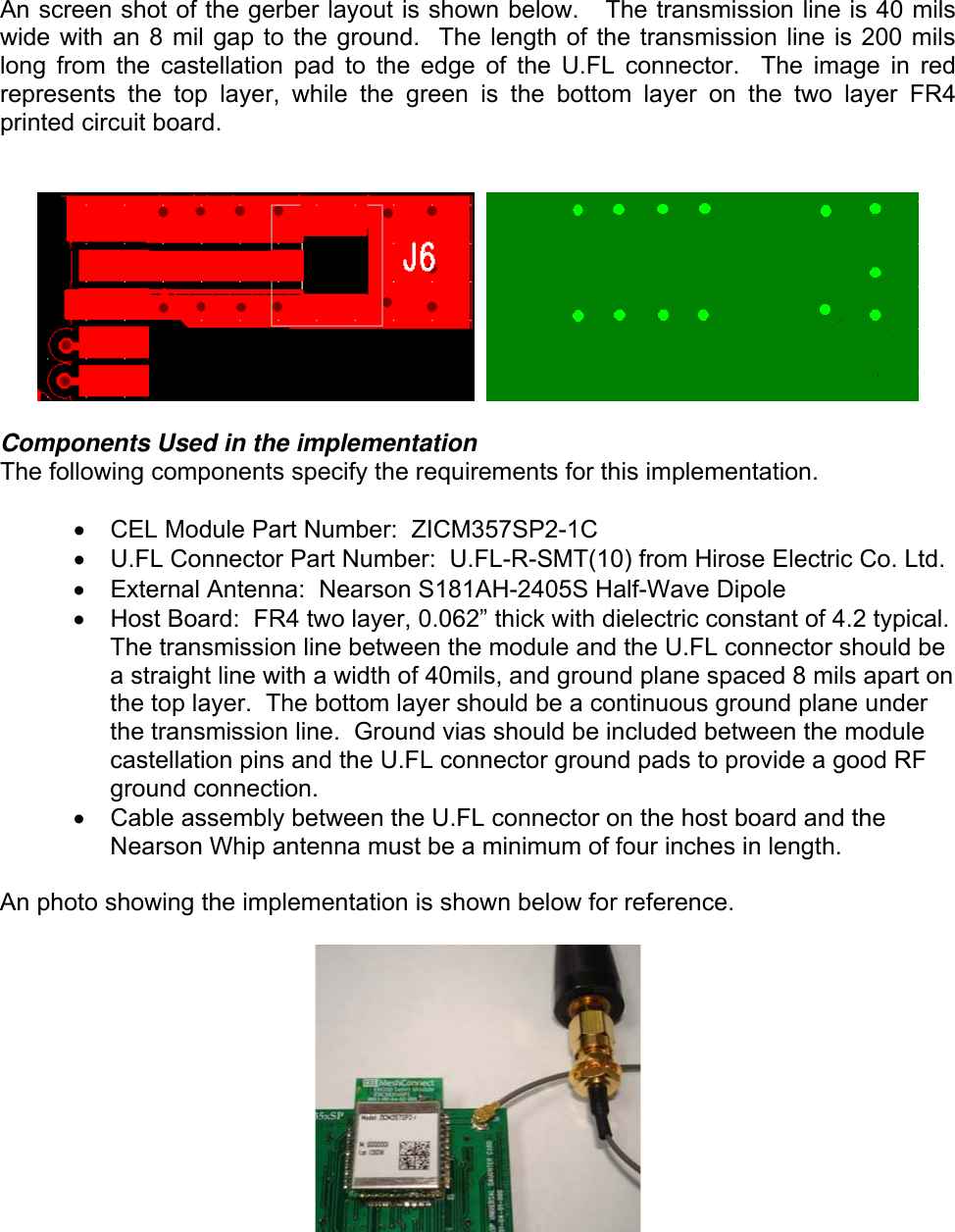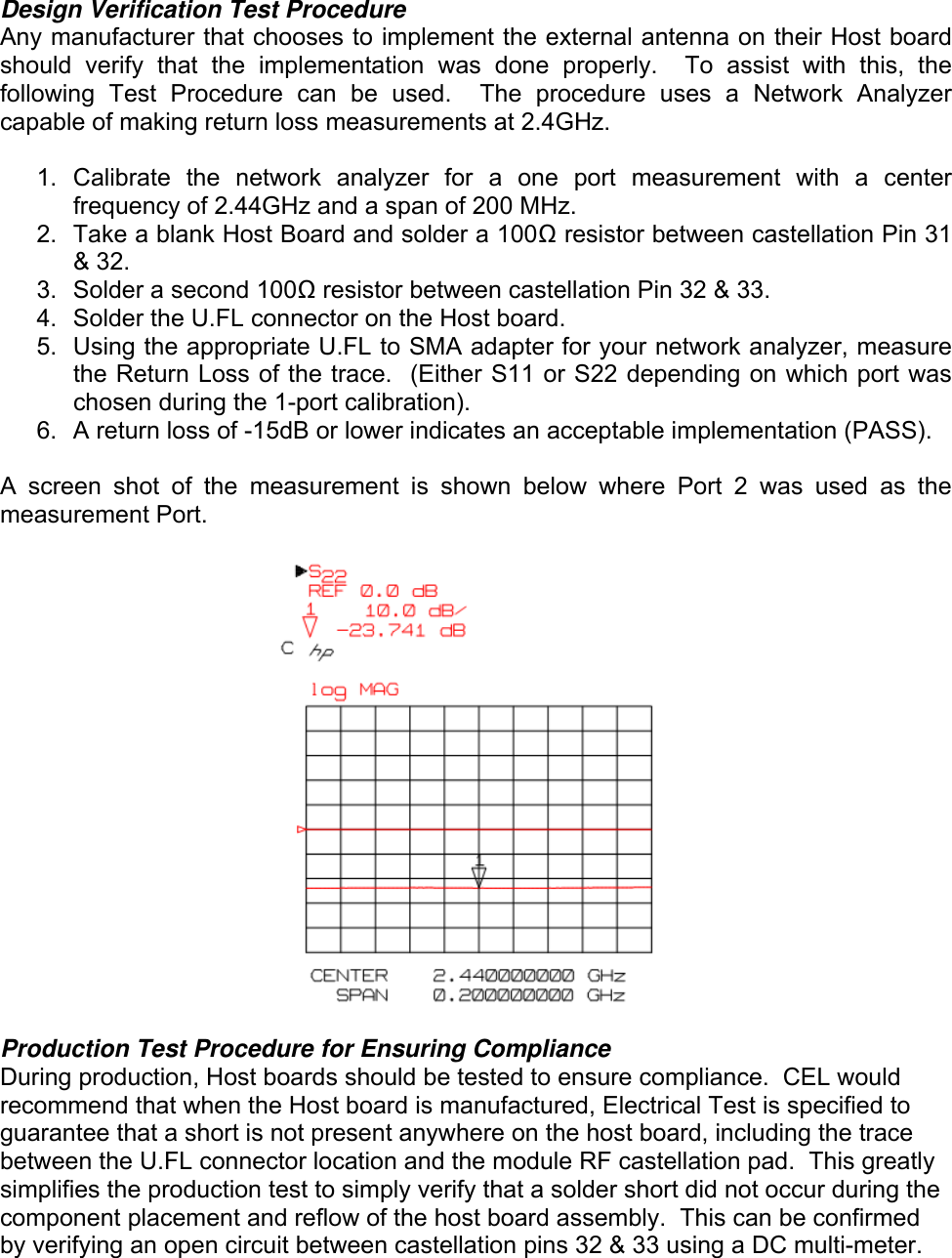California Eastern Laboratories ZICM357SP2 ZigBee Development Kit User Manual Professional Letter
California Eastern Laboratories ZigBee Development Kit Professional Letter
Contents
- 1. manual
- 2. external antenna trace instructions
external antenna trace instructions


